Idea by
Idan Sidi and Dor Cohen
Call for ideas 2019
Daydreaming: The Over-built Jerusalem
Daydreaming: The Over-built Jerusalem
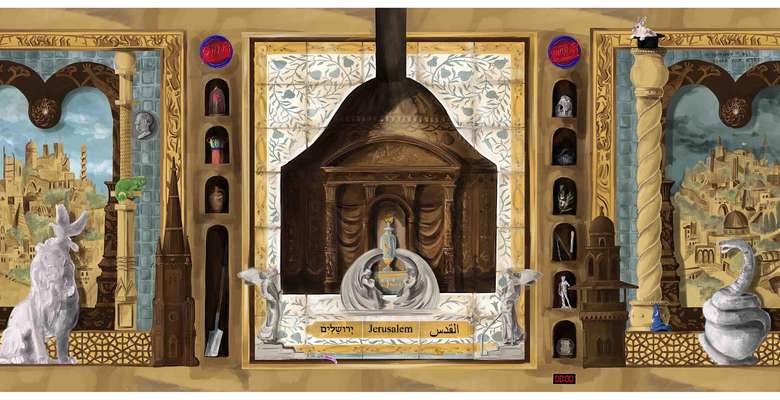
- New alliances
Can a city exist forever? What makes a city eternal? With these questions in mind, we developed an idea, which deals with the notion of time and its presence in urban spaces. The project begins with the utopia written by Boris Schatz in 1918 on Jerusalem of 2018 and tries to envision the next point in time - 2118. Jerusalem is a city built in layers. Each layer depicts a certain time and is a spatial memory of the city’s past. Without these layers, the city’s identity is in danger. The project deals with the influence of speculative architecture on the urban space in the past, the present, and the future. The use of visionary architecture is associated with a constant change of the city that enables it to become eternal. We create a point of contact between history and vision, between visible and invisible, between reality and imagination, between tradition and innovation in order to encourage the contemporary city to co-exist with its future and past as it should.
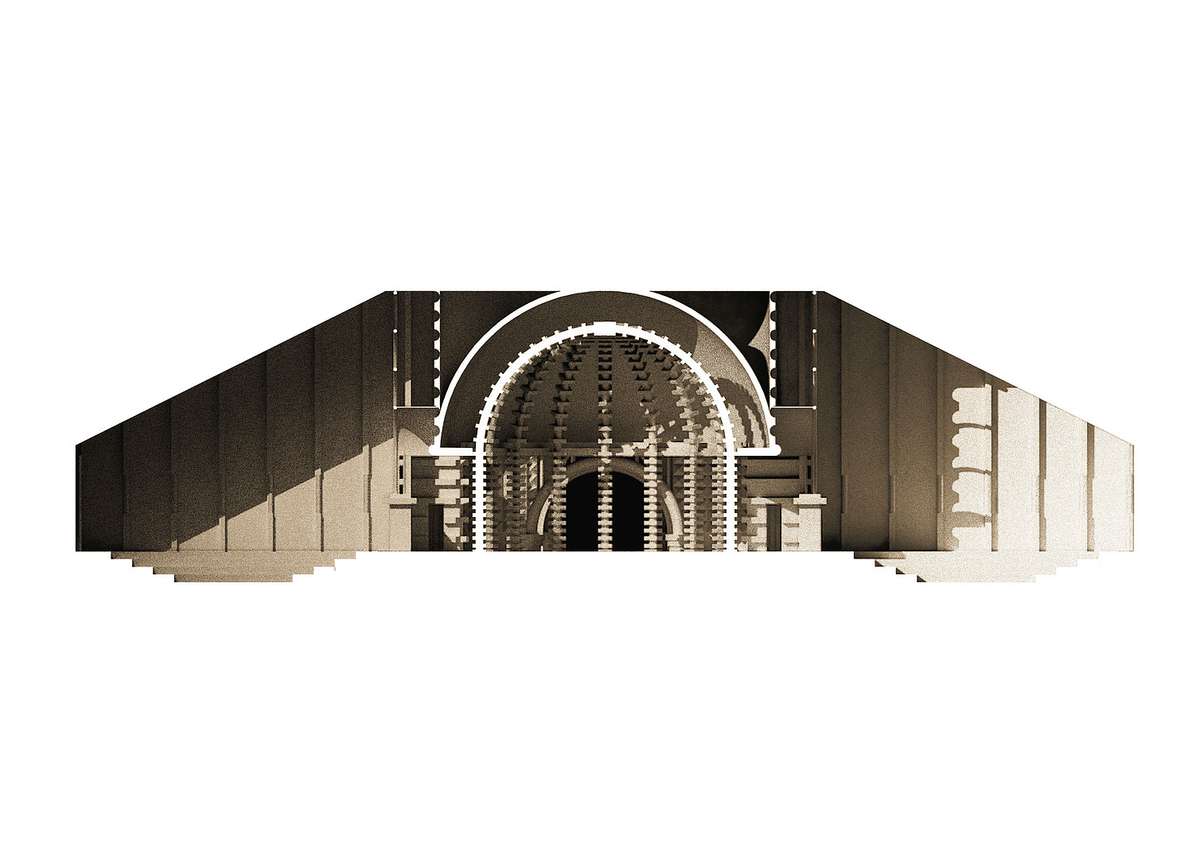
The constant change is in conflict with the difficulties of architecture in reality, which involve processes that take a long time and prevent from the city to change quickly. This pace is made possible by various speculations that build the city parallel to its physical construction. Despite the meaning of the term "vision," which is usually associated with idealistic ideas, devoid of practice and utopian characteristics, it functions as a mental mirror of an idea based in reality.
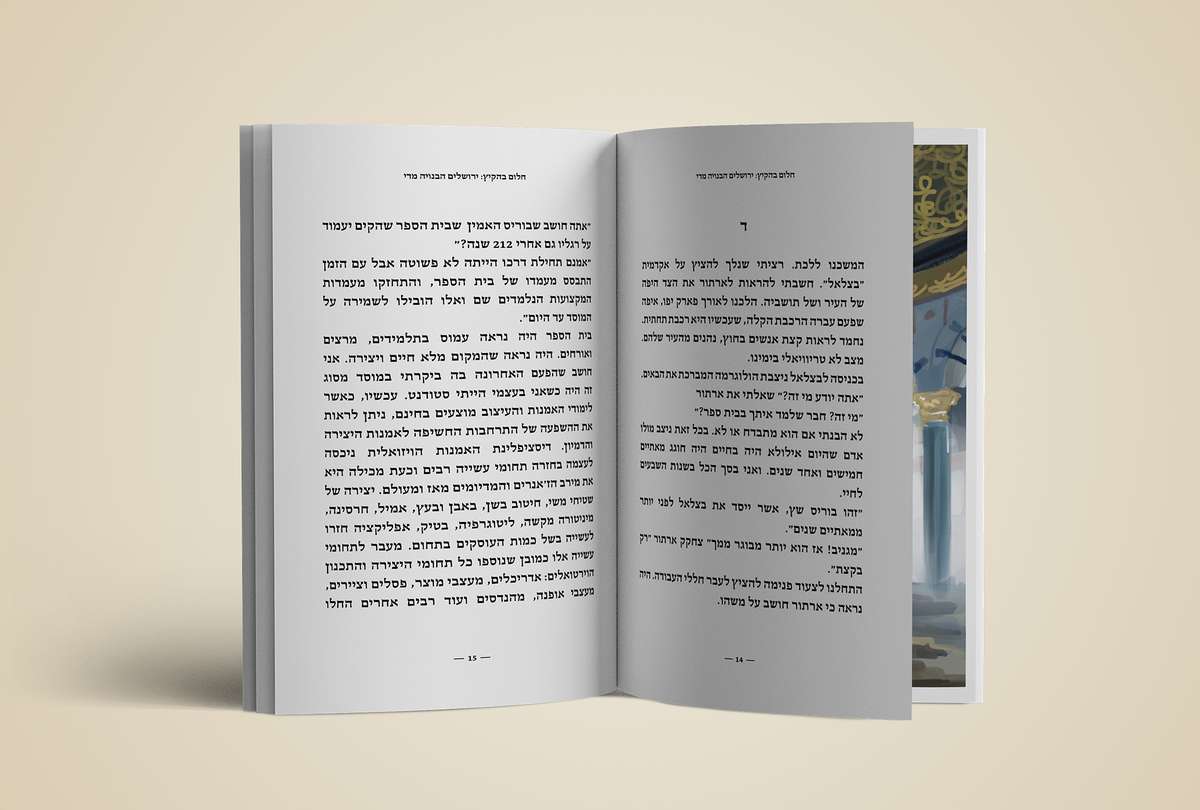
One channel of our exploration resulted in a book written by us depicting a plot revolving around our project in its future point in time. Throughout storytelling, we enabled a fantasy-inspired vision for our development process and for the viewers’ immersive experience. Alongside the story, in the book are drawings depicting the spirit of time, our project’s manifesto and creating a new visual language for architecture representation.
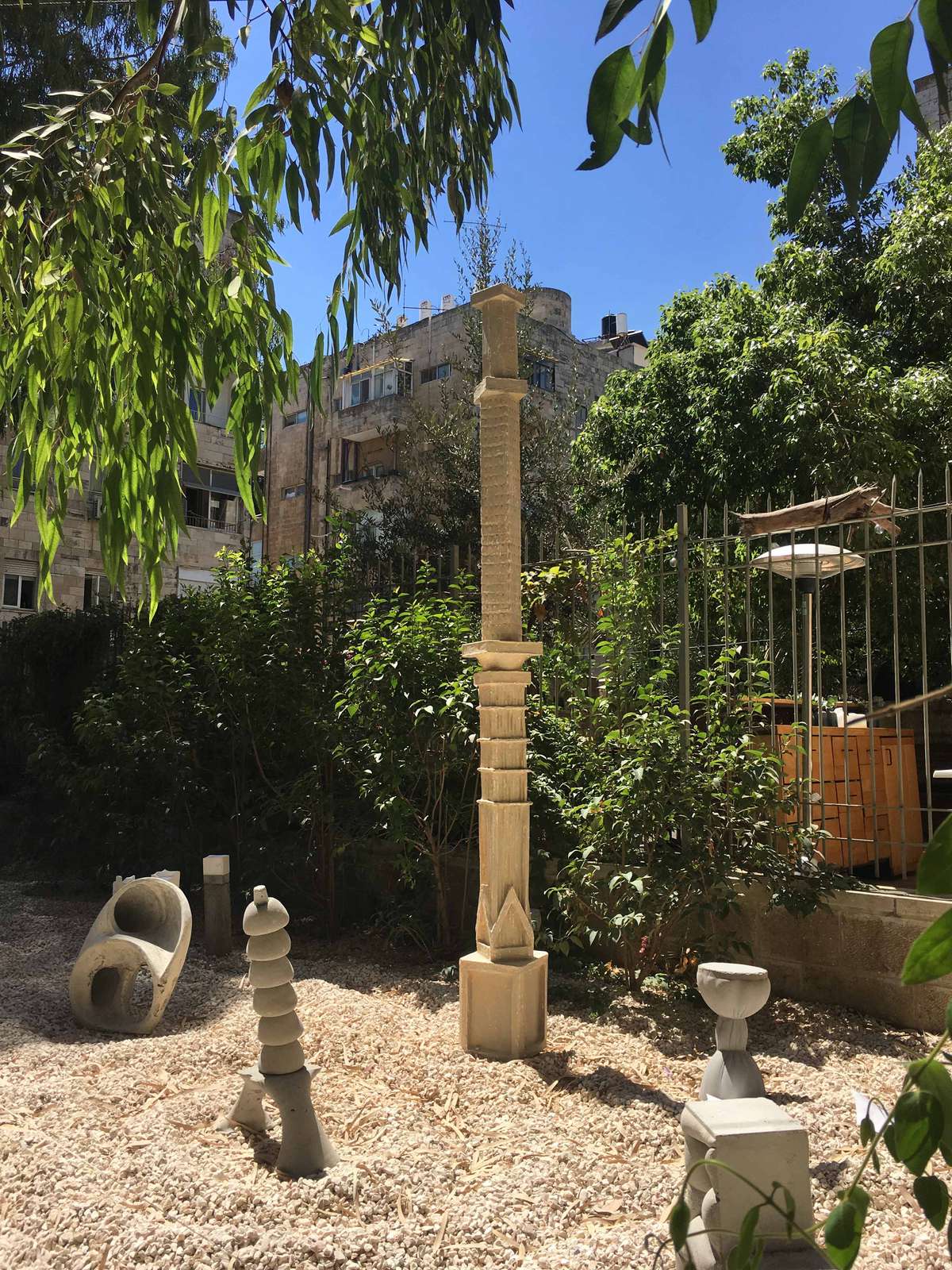
Our detail-oriented approach led us to investigate the importance of basic architectural elements getting a vast amount of attention. A proposal for a new Jerusalem-order column is supporting our will to revive the glorious and grand potential in architecture, through a 1:1 scale model. Creating the reality within imagination.
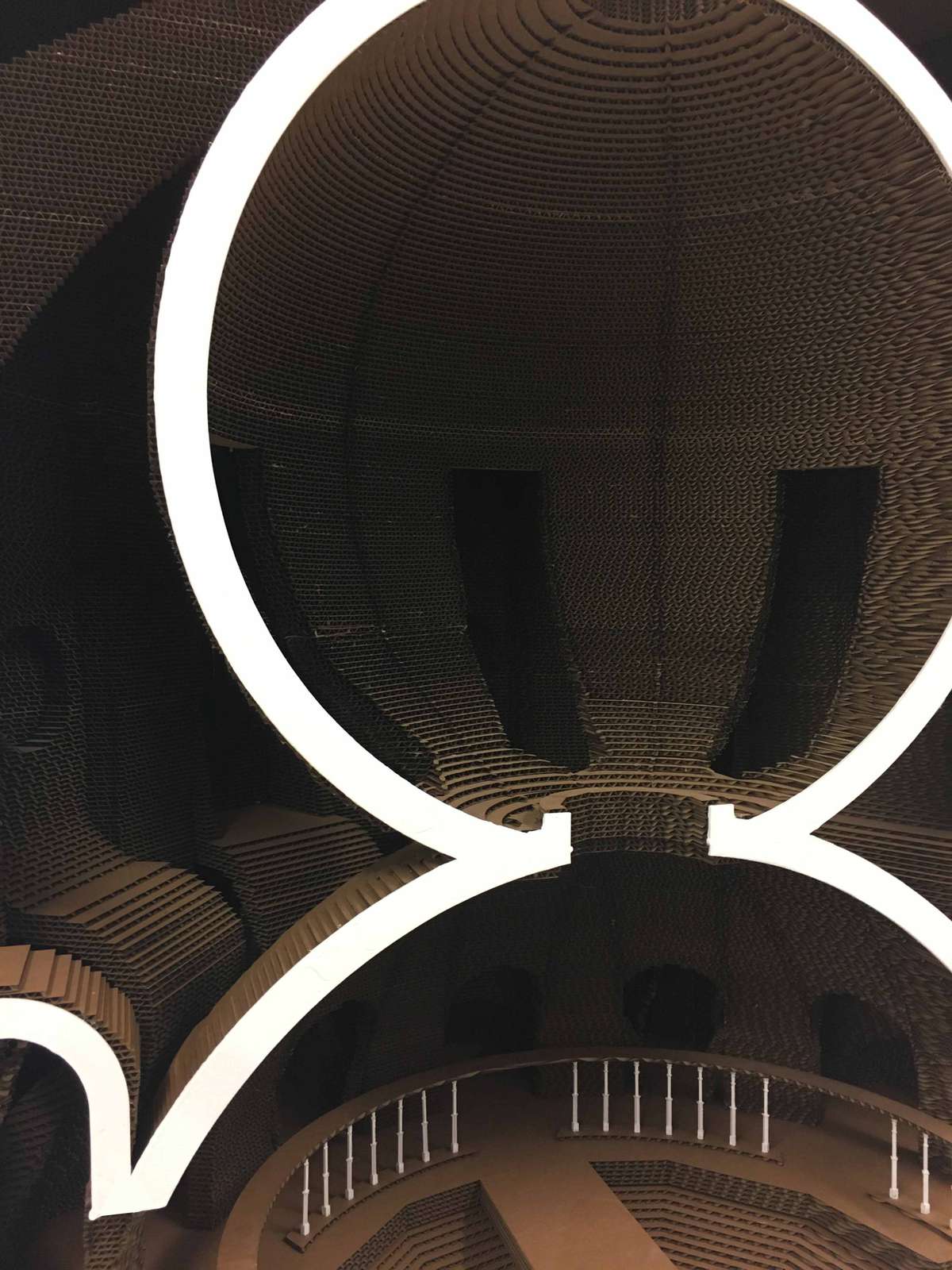
With the creation of an architectural model we explored the value of the representation, the phase where virtuality and reality meet.

The VR tool offers a new tactic for action in space, as opposed to layered construction, which is based on demolition. The VR allows us to maintain all the possibilities and stories simultaneously, at the same time.
The use of the virtual world opens up new architectural possibilities, allowing the viewer to lose control, to meet the interior space as the first experience with the building, and neutralize the facade that is so identified with the monuments in the city known to us.
Daydreaming: The Over-built Jerusalem
Daydreaming: The Over-built Jerusalem

- New alliances
Can a city exist forever? What makes a city eternal? With these questions in mind, we developed an idea, which deals with the notion of time and its presence in urban spaces. The project begins with the utopia written by Boris Schatz in 1918 on Jerusalem of 2018 and tries to envision the next point in time - 2118. Jerusalem is a city built in layers. Each layer depicts a certain time and is a spatial memory of the city’s past. Without these layers, the city’s identity is in danger. The project deals with the influence of speculative architecture on the urban space in the past, the present, and the future. The use of visionary architecture is associated with a constant change of the city that enables it to become eternal. We create a point of contact between history and vision, between visible and invisible, between reality and imagination, between tradition and innovation in order to encourage the contemporary city to co-exist with its future and past as it should.
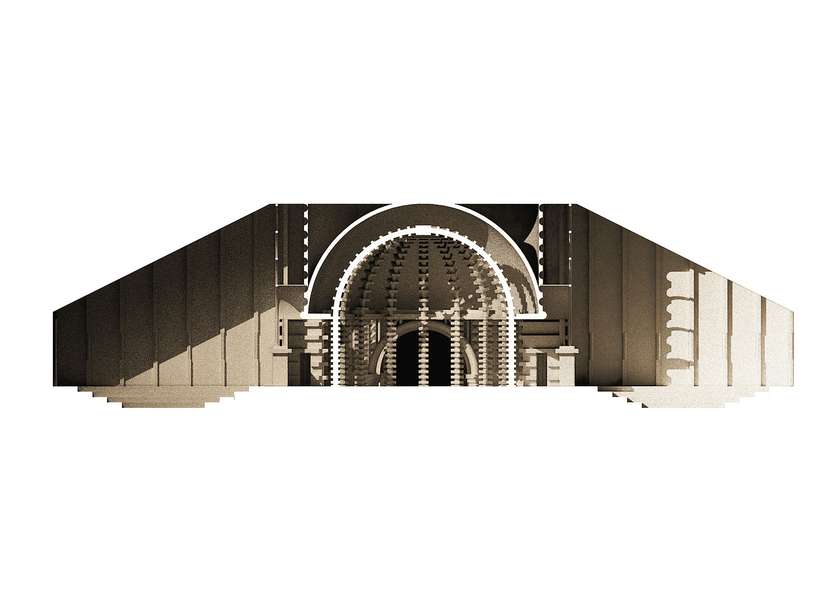
The constant change is in conflict with the difficulties of architecture in reality, which involve processes that take a long time and prevent from the city to change quickly. This pace is made possible by various speculations that build the city parallel to its physical construction. Despite the meaning of the term "vision," which is usually associated with idealistic ideas, devoid of practice and utopian characteristics, it functions as a mental mirror of an idea based in reality.
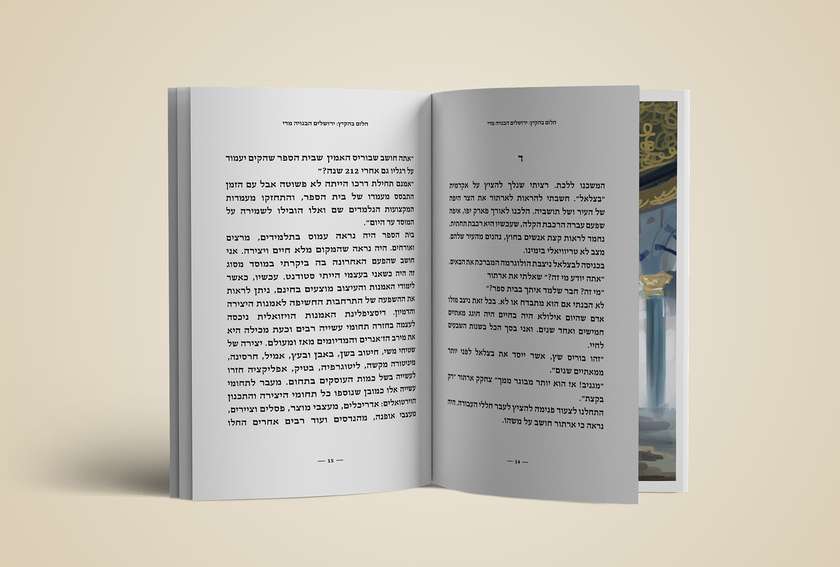
One channel of our exploration resulted in a book written by us depicting a plot revolving around our project in its future point in time. Throughout storytelling, we enabled a fantasy-inspired vision for our development process and for the viewers’ immersive experience. Alongside the story, in the book are drawings depicting the spirit of time, our project’s manifesto and creating a new visual language for architecture representation.
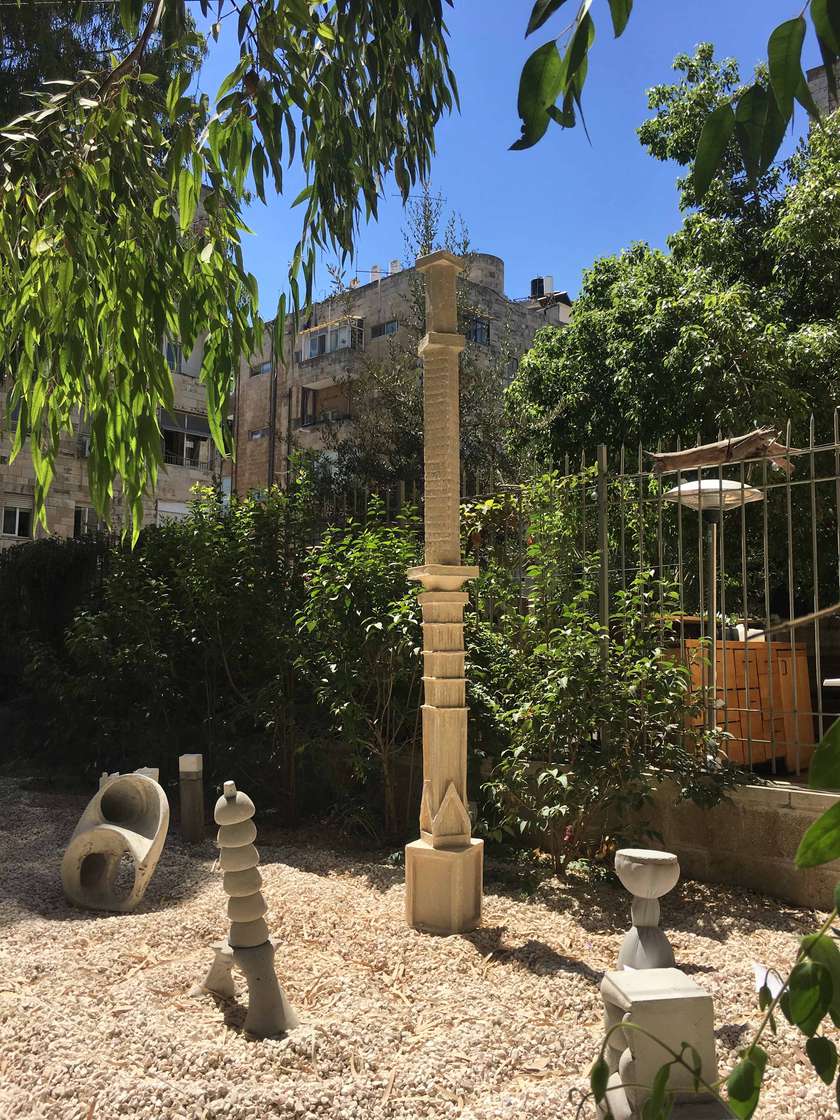
Our detail-oriented approach led us to investigate the importance of basic architectural elements getting a vast amount of attention. A proposal for a new Jerusalem-order column is supporting our will to revive the glorious and grand potential in architecture, through a 1:1 scale model. Creating the reality within imagination.
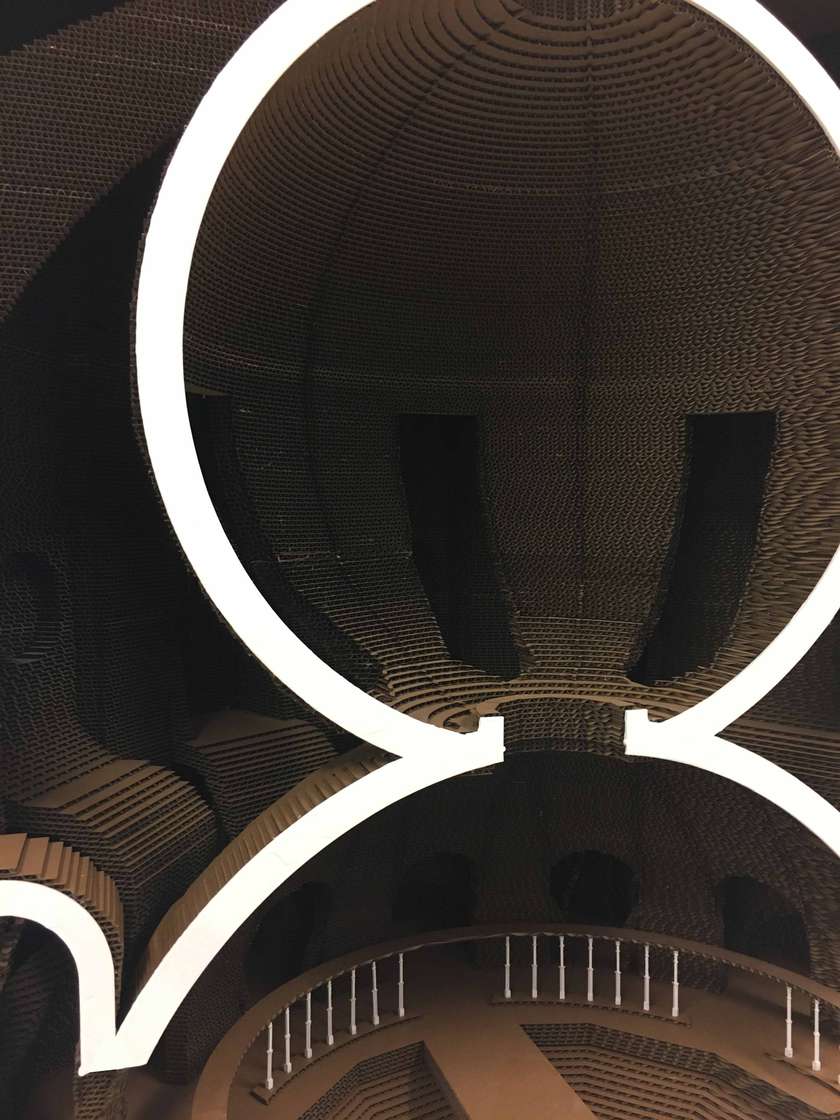
With the creation of an architectural model we explored the value of the representation, the phase where virtuality and reality meet.
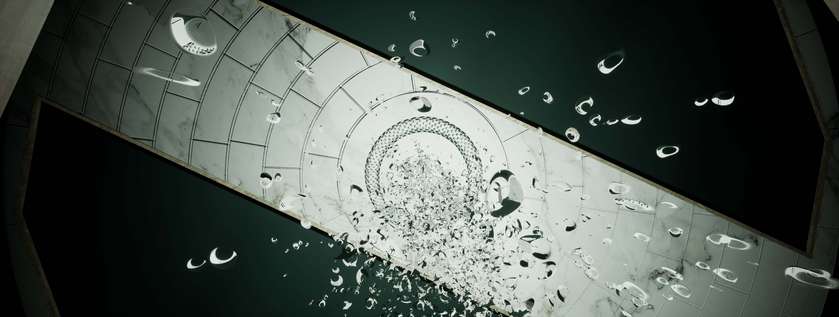
The VR tool offers a new tactic for action in space, as opposed to layered construction, which is based on demolition. The VR allows us to maintain all the possibilities and stories simultaneously, at the same time.
The use of the virtual world opens up new architectural possibilities, allowing the viewer to lose control, to meet the interior space as the first experience with the building, and neutralize the facade that is so identified with the monuments in the city known to us.